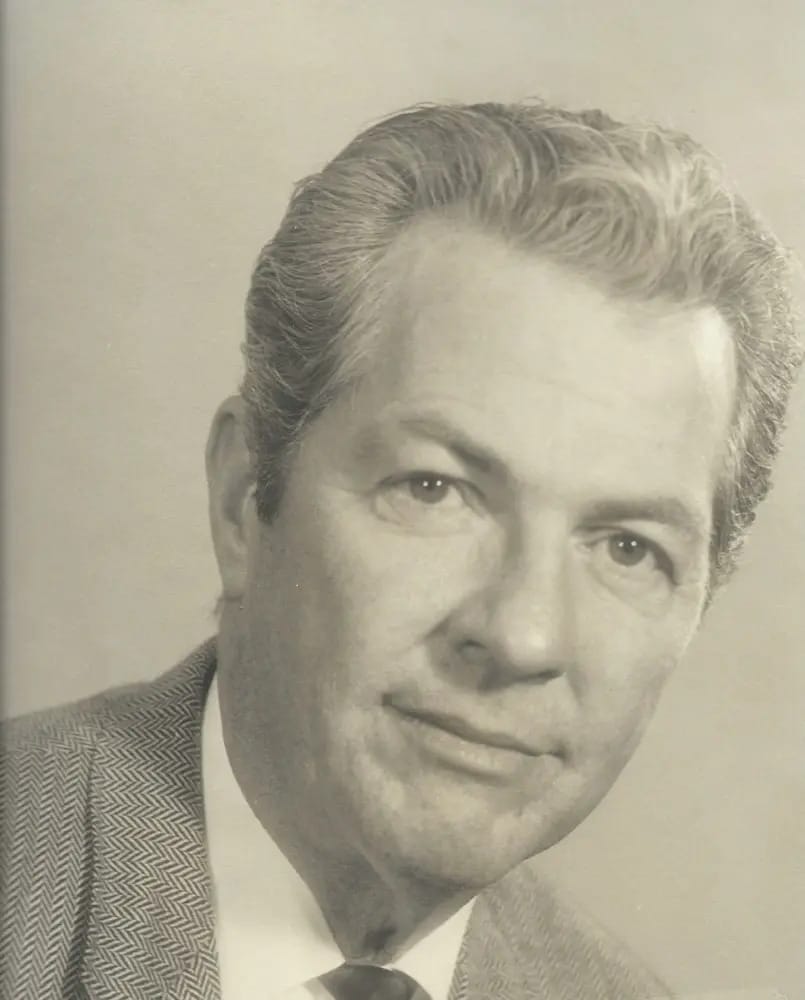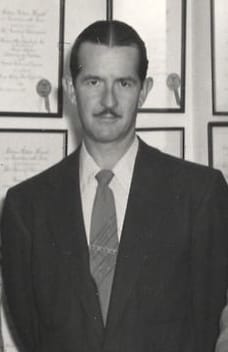- The Looney Blog
- Posts
- The Looney Tunes Animators from M to R
The Looney Tunes Animators from M to R

Bob Matz (July 8, 1912-March 28, 2003)
An assistant animator in Friz Freleng’s unit in the 1950’s who later animated on Freleng’s 1957 masterpiece, “Three Little Bops” before becoming a full-fledged animator in the 1960’s, also in Freleng’s unit. He also animated on most of the cartoons from the DePatie-Freleng era. Style: The easiest way to identify Matz’s animation is when characters are shown from a certain angle (from their left side, to be specific).

Carman Maxwell (December 27, 1902-September 22, 1987)
Nicknamed “Max”, Maxwell was one of the main animators for Hugh Harman and Rudolf Ising and he also voiced Bosko in the pilot cartoon, “Bosko the Talk-Ink Kid” (1929).

Norm McCabe (February 10, 1911-January 17, 2006)
McCabe was one of the principal animators in Bob Clampett’s old unit, which he later took over for a short time when Tex Avery left for MGM and Clampett took over Avery’s unit. In 1943, McCabe was drafted and left, but he later returned to animating for the Looney Tunes in the mid-1960’s during the DePatie-Freleng era. Style: the most off-model (in a good way) of the early Clampett animators.
No photos or birth and death info of him were found, but a former UPA animator named Tom McDonald was given credit on Rudy Larriva’s first Roadrunner cartoon, “Run Run Sweet Roadrunner” (1965). His scenes in that cartoon can be found simply by the animation that doesn’t look familiar in Larriva’s other Roadrunner cartoons (Hank Smith, who animated on the other 10, was the only other animator on “Run Run Sweet Roadrunner”).

Charles McKimson (December 20, 1914-April 16, 1999)
The youngest of the three McKimson brothers, Charles briefly animated for Tex Avery from 1939 to 1941 before he left for the war. After returning, he became the head animator in his brother Robert’s unit from 1947 to 1955. Style: the most on-model animator in McKimson’s late 1940’s and early 1950’s cartoons. The most obvious sign of Charles’ animation is the fact that he was the go-to animator for closeup shots.

Robert McKimson (October 13, 1910-September 29, 1977)
While he gained much greater fame as a director, Robert was the studio’s head animator from the beginning in 1930 up until he was promoted to director in 1946. He actually became a highly-skilled animator thanks to a concussion which caused him to see movement a lot faster and draw more animation than anyone else. He also worked under nearly every major director at some time. Style: Absolutely flawless animation; was often given the most difficult scenes to do as other animators couldn’t accomplish them as well as he could.

Thomas McKimson (March 5, 1907-February 14, 1998)
The eldest of the three McKimson brothers had the shortest stint out of them at the studio. He was mostly a layout artist but he briefly was an animator at one point for Harman and Ising and later for Clampett in 1943 and 1944. Style: not really that much different from Robert’s but eagle-eyed Clampett fans have been able to differentiate his work.

Bill Melendez (November 15, 1916-September 2, 2008)
The very same person who would later bring the iconic characters of Charles Schulz’s brilliant “Peanuts” to television, Melendez was an animator long before that period. He animated on most of Clampett’s last cartoons in 1945 and 1946, all of Arthur Davis’ cartoons throughout his entire directorial stint (1946-1949), and for McKimson from late 1949 to 1951 before leaving. Style: Very wild, but a lot more elegant than the animation of Rod Scribner or Manny Gould. Animation is also very lively in movement.

Phil Monroe (October 31, 1916-July 13, 1988)
Monroe was an animator for Jones in his early period (1938-1942) before he briefly animated for Freleng (1942-1943) as well as Frank Tashlin (only for 1943’s “Porky Pig’s Feat”), and Clampett (1943-1944). He then left for a bit but then returned in the late 1940’s, again working for Jones as one of his principal animators up until his departure in 1952. Style: Often rubbery and loose (not on the same level as Robert Cannon), and rarely makes the characters move their heads when talking.
No photos or birth and death information have been found of him, but Ray Patin was briefly at the studio in 1943 and 1944 (mostly animating for Tashlin and Jones) and a brief scene in McKimson’s first cartoon, “Daffy Doodles” (1946). Style: a very Disney-like animator; in Tashlin’s cartoons, the way he draws Daffy has him look very similar to Donald.

Manuel Perez (June 17, 1914-January 18, 1981)
Perez was one of Freleng’s key animators in the late 1940’s before he briefly animated for McKimson in 1950. In 1951, Perez returned to Freleng’s unit and stayed there until his departure in 1955 (incidentally, Ken Champin was also in Freleng’s unit for the same amount of years as Perez was, joining and leaving in the exact same years, with the only difference being that Champin never left the unit at any point during his time at the studio). In the mid-1960’s, Perez was one of the main animators on the DePatie-Freleng produced Looney Tunes, along with Warren Batchelder and Bob Matz. Style: similar to Ed Barge in the Tom and Jerry cartoons, Perez draws the characters a lot more rounder than usual.

Tom Ray (August 2, 1919-April 6, 2010)
Ray animated for McKimson in the late 1950’s up until early 1961 and from that point on, mostly worked with Jones, even after Jones left the studio upon the original 1964 closure. Style: the McKimson-ish animator of the Jones unit and vice-versa (as he and Keith Darling never animated on the same cartoon, they practically have the same description as to how their respective animation can be identified).

Vive Risto (November 1, 1902-April 23, 1981)
The Finnish-born Vive Risto animated for Clampett in his early years (1938-1941) and for Norm McCabe throughout his entire directorial stint. Style: Animation is very different from the others and is a bit more restrained.

Virgil Ross (August 8, 1907-May 15, 1996)
If any animator other than Ken Harris could be described as “elegant”, that other animator would unquestionably be Virgil Ross, whose characters were always on-model and spiffy. He animated on all of Tex Avery’s Warner cartoons, for Clampett from late 1941 to mid-1944 and most famously for Freleng from 1944 to 1964. Ross also animated on 10 of Rudy Larriva’s 11 Roadrunner cartoons in the mid-1960’s. There’s also a road in the county I live in (Oconee) called “Virgil Langford Road” and ever since the spring of 2015, I’ve always thought of Ross whenever going down that road or mentioning it, since Virgil isn’t that common of a name. Style: the most on-model animator (he was only second to McKimson when he animated for Clampett), and often uses the “smear” technique.
Next week: the final group of animators from S to Z.